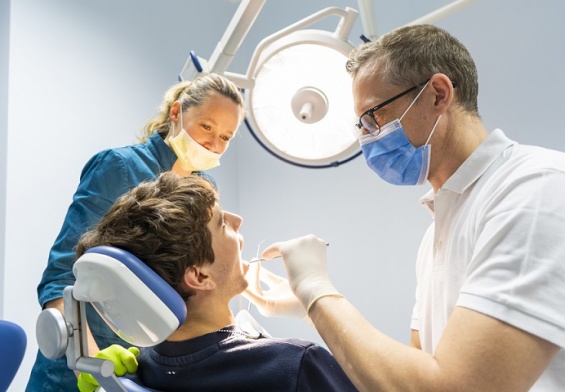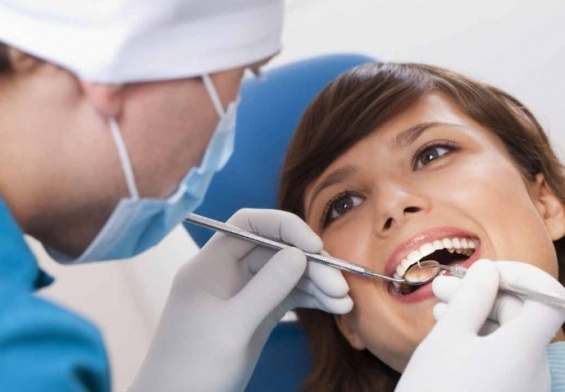Does your child rely on thumb sucking to self-soothe? It’s a totally normal, natural habit for children to have, but to answer the titular question, it can damage their teeth if they’re doing it too hard, or for longer than is normal. Therefore, understanding the effects of thumb sucking and when to address it can help New Jersey parents protect their child’s smile and oral development.
The Connection Between Thumb Sucking and Dental Health
Thumb sucking is a natural reflex that begins in infancy, helping kids feel comfortable and secure. However, prolonged or vigorous thumb sucking can affect dental development. According to top dentists in NJ, the thumb puts pressure on the teeth, jaw, and roof of the mouth that can lead to noticeable changes if the habit continues beyond the toddler years.
Potential Dental Problems Caused by Thumb Sucking
- Overbite and Open Bite: Continuous pressure from thumb sucking can cause the upper front teeth to protrude or prevent the top and bottom teeth from meeting when the mouth is closed.
- Jaw Misalignment: Persistent thumb sucking can alter jaw shape, leading to alignment issues that may affect chewing and speech.
- Narrowing of the Palate: The roof of the mouth may become narrower, potentially causing crowding of permanent teeth as they emerge.
- Speech Difficulties: Changes in dental structure may result in speech impediments, such as a lisp.
These issues are more likely to occur if your child is still sucking their thumb after their permanent teeth start coming in, usually around age six.
When Should You Be Concerned?
Most children naturally stop thumb sucking between ages two and four. However, if your child continues the habit beyond this age or you notice signs of dental misalignment, you should intervene. Addressing the issue early can help prevent long-term complications and prevent the need for corrective treatments later.
Signs That Thumb Sucking May Be a Concern:
- Upper front teeth pushing outward or upward.
- Lower teeth tilting inward.
- Gaps between the upper and lower teeth when the mouth is closed.
- Difficulty biting or chewing food properly.
Strategies to Help Your Child Stop Thumb Sucking
It can be difficult to break your child’s ingrained thumb sucking habit, but it’s possible with consistent support and effective strategies. Here are some helpful approaches recommended by pediatric dentists:
- Positive Reinforcement: Celebrate small victories by rewarding your child when they avoid thumb sucking. A sticker chart, a favorite bedtime story, or extra playtime can motivate your child to work toward their goal. This approach builds their confidence while making the process enjoyable.
- Identify Triggers: Thumb sucking often occurs as a response to boredom, stress, or fatigue. Pay attention to when your child engages in the habit and what causes them to do so. A relaxing bedtime routine or a calming activity can reduce the need for self-soothing behaviors.
- Distractions and Engaging Activities: Keep your child’s hands busy with activities like drawing, playing with clay, or participating in games. Hand-based tasks occupy their fingers while encouraging creativity and problem-solving, helping them transition away from thumb sucking.
- Professional Support: A pediatric dentist or orthodontist can provide expert advice, recommend orthodontic devices, or discuss other options to deter thumb sucking gently. In some cases, a simple conversation with a trusted professional can resonate with children and inspire them to break the habit.
The Role of Top Dentists in NJ in Treating Thumb Sucking Effects
If thumb sucking has already affected your child’s dental alignment, early orthodontic care can help. Dentists and orthodontists offer several solutions to correct issues and support healthy oral development.
- Orthodontic Braces: Traditional braces or clear aligners can realign teeth and correct bite problems. Early intervention can fix potential complications before they get worse.
- Retainers: Retainers help maintain proper alignment after braces or other orthodontic treatments. Custom-fitted for your child’s needs, they’re an effective way to preserve a straight smile for the long term.
- Specialized Appliances: Devices designed to discourage thumb sucking can gently guide dental development while helping children break the habit. These appliances are tailored to fit comfortably and support healthy growth.
Collaborating with leading dental professionals in New Jersey ensures your child receives personalized care that addresses their unique needs. Pediatric dental experts treat existing issues and take proactive steps to promote lasting oral health. This comprehensive approach provides a solid foundation for your child’s smile.
Preventing Long-Term Dental Issues
Prevention is the best way to protect your child’s smile. Begin regular dental visits by their first birthday to keep an eye on their oral development and detect potential issues early. Dentists in NJ recommend maintaining good oral hygiene habits, like brushing, flossing, and following a balanced diet, to support your child’s overall health.
If you’re in New Jersey and concerned about thumb sucking or its effects on your child’s teeth, connect with local dental professionals today. Early action and expert care can protect your child’s smile for years to come.
Resources:
https://www.webmd.com/oral-health/what-to-know-thumb-sucking-impact-teeth
https://www.healthline.com/health/parenting/thumb-sucking-teeth
https://aaoinfo.org/whats-trending/can-pacifiers-and-thumb-sucking-affect-my-childs-teeth/




